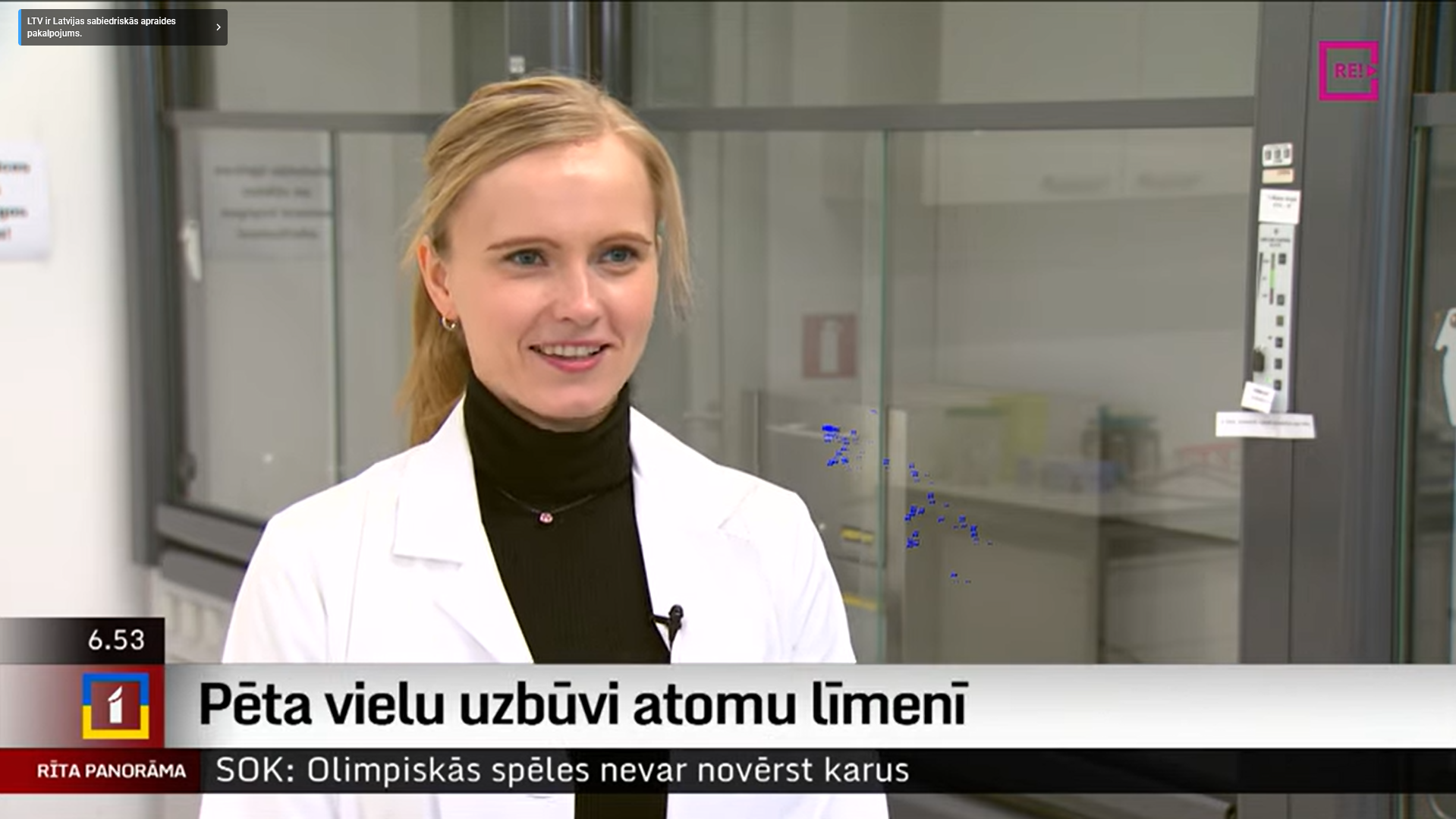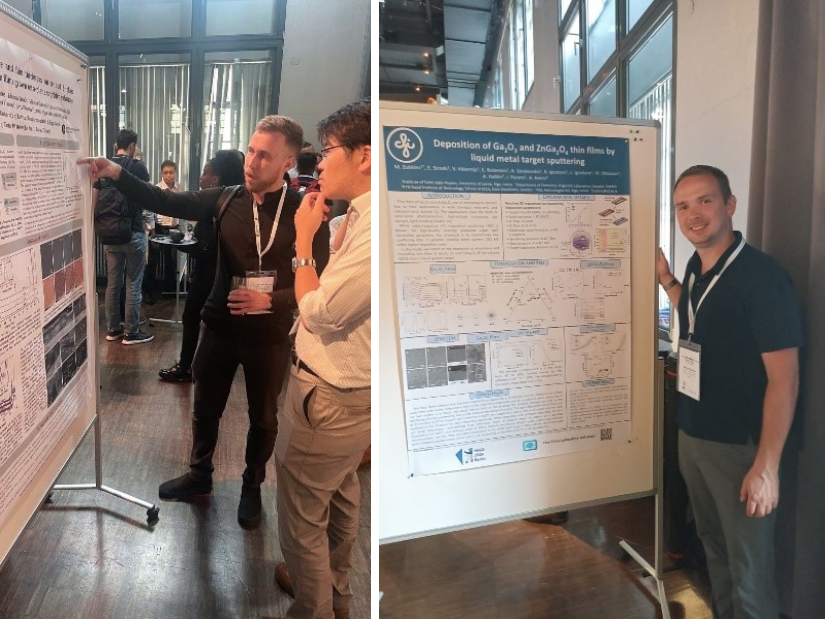On February 23, the national television (LTV1), in its morning program “Rīta Panorāma” (“Morning Panorama”), showed a story about the young ISSP UL scientist from EXAFS Spectroscopy Laboratory, Inga Pudža, who received the Ludvigs and Māris Jansons prize in physics awarded by the Latvian Academy of Sciences.
She is known as one of the brightest young scientists and an example to others that a career can be built here in Latvia. Her daily work involves structural research of materials at the atomic level, creating new markers that could indicate whether, for example, food products or vaccines have been stored at the appropriate temperature during transportation or storage on store shelves.
The researcher states: "I have been interested in science since childhood. My mother is a lecturer at Daugavpils University. She teaches science to preschool teachers. Accordingly, there were many interesting books at home with various experiments in a language that children could understand. I liked flipping through books and knew I wanted my career to be in exact sciences."
The young scientist has just received the Ludvigs and Māris Jansons award in physics for her doctoral thesis, "The effect of local structure on the thermochromic properties of copper molybdate and its solid solutions". Each year the prize is awarded to the best young scientist in physics.
"My doctoral thesis was about studying the local structure of materials that change their color under the influence of temperature: either when the materials are heated to high temperatures or cooled to very low temperatures, for example, below -70 degrees Celsius. In my work, I have discovered that the color change of materials is closely related to the oscillation of atoms and change in their arrangement," she explains.
The process of determining how the atomic arrangement has changed is very delicate. Inga Pudža emphasizes that subtle, experimental methods using X-rays are required to understand the connection between structure and color change. From that, she can learn information about the atomic structure of materials. Inga explains that researchers in the EXAFS Spectroscopy Laboratory conduct experiments in synchrotrons or particle accelerators. There are no such synchrotrons in Latvia, so scientists often work in big European scientific centers.
Inga Pudža continues that this was how a fundamental understanding was obtained. When researchers understand what is happening in front of their eyes, it is possible to modify it and apply it in practical life, for example, by creating new markers indicating whether medicines and food products have been transported and stored at the right temperature. Inga also adds that she researched a material that is cheap, effective and, in a way, primitive but gives an instant answer - whether the product has been stored in appropriate conditions or not.
Even though Inga spends quite a lot of time at the computer every day, she loves her research work at the institute. When asked about Inga, the ISSP UL’s leading researcher of the Laboratory of Organic Materials, Kaspars Pudžs, says she is a very dedicated young scientist who can achieve much with her work. Inga’s colleague and the head of the EXAFS Spectroscopy Laboratory, Aleksejs Kuzmins, characterizes her as one of the brightest young scientists. He continues that she is an example for young scientists and Latvia in general; she is proof that one can build their career in Latvia and reach a significant level on an international scale by working in Latvia.
At the end of the story, Inga states that what she likes the most about her work is the moment of discovery, when her research has led her to see something that no other person in the world has noticed.



